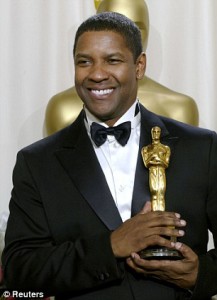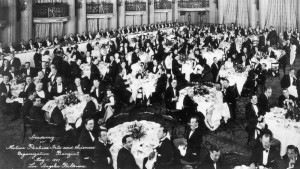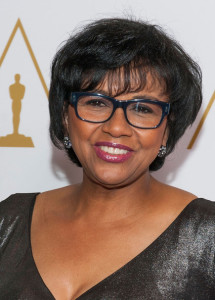
“If the country is 12% black, make the academy 12% black,” Washington said. “If the nation is 15% Hispanic, make the academy 15% Hispanic. Why not?” Denzel Washington
Well, why not? The response by Academy Award winning actor Denzel Washington to the controversy over the persistent lack of diversity in Oscar nominations represented by—for the second year in a row—an all white slate of nominees for the acting awards (and virtually all-white slates in most other categories is more than just a rhetorical question. And the issues raised by this controversy are of course not new: the #OscarsSoWhite hashtag was started by April Reign last January in response to that year’s white-out.

Last year I wrote about the issues of race, inclusion, and the Oscars in relation to the exclusion of Ava DuVernay from the Best Director category even though her movie, Selma, was nominated for Best Picture. There I pointed out that in many ways, the creation of the Academy of Motion Picture Arts and Sciences in 1927 was designed to limit diversity and inclusion, based on the idea that only “the best” actors, directors, writers, etc. would be invited to join. The point was to create prestige, a sense of belonging to an honored elite. The MGM mogul Louis B. Mayer planned to use the Academy as a way to circumvent the growing union movement in Hollywood. Who needs to join a union when you are offered membership in a special group reserved for the best of the best? It’s a classic divide-and-conquer move: “You’re not like those other film editors. You’re a member of the academy.”
The creation of the Academy ultimately didn’t prevent the unionization of Hollywood, and over time the focus of the Academy shifted. The creation of a prestigious academy would now allow Hollywood to try and burnish the prestige of both the movie industry and the idea of movies as a fine art through the creation of the Academy Awards. The Academy also undertook philanthropic and even scholarly projects, sponsoring scholarships for young filmmakers and research into the history of the movies and developments in movie technology. But through it all, the idea of prestige persisted, and membership in the Academy involved a complex process of nomination and election overseen by a Board of Governors. Today, in spite of the tens of thousands of people involved in the production of American movies, fewer than 6,000 people belong to the Academy of Motion Picture Arts and Sciences, and these are the people involved in nominating and voting for the Oscars.
And as I also mentioned last year, the exclusivity of that membership extends to demographics as well. In a landmark article from 2012, the LA Times managed to circumvent the secrecy surrounding the membership roles of the Academy to determine that
Oscar voters are nearly 94% Caucasian and 77% male, The Times found. Blacks are about 2% of the academy, and Latinos are less than 2%. Oscar voters have a median age of 62, the study showed. People younger than 50 constitute just 14% of the membership.
 Given these statistics, the exclusion of the critically-acclaimed and popular Straight Outta Compton from the Best Picture category (with two slots left blank) doesn’t seem that hard to understand: how many old white guys are going to connect with a movie about gangster rap?
Given these statistics, the exclusion of the critically-acclaimed and popular Straight Outta Compton from the Best Picture category (with two slots left blank) doesn’t seem that hard to understand: how many old white guys are going to connect with a movie about gangster rap?

All of which brings us back to Denzel Washington’s question. If the goal is to expand the kinds of movies and moviemakers that the academy considers for the Oscars, why not start by extending that inclusiveness to the Academy membership? Cheryl Boone Isaacs, the president of the Academy (the first African American to hold the position and only the third woman) shook up the staid world of the Academy by trying to do just that, unveiling a list of proposals to expand the demographic inclusiveness of both the membership and the Board of Governors while also creating a process for removing members who have become inactive in their professions.
These proposals were hailed by many, but they also provoked a backlash from some longtime members. Basically, there were two objections, both of which speak to the problems with the creation of an elite academy. One is that the Oscars are taking the blame for what is an industry-wide problem, and that the lack of nominees is the result of Hollywood not creating more movies that reflect the diversity of human experience. This response has the virtue of being true . . . as far as it goes. There is no question that Hollywood remains a white male dominated industry, both in executive positions and in the stories told on the big screen. As Spike Lee put it in when he accepted an honorary Oscar from the Academy last November, “’It’s easier to be the president of the United States as a black person than to be the head of a studio.’”
But this is also a convenient argument for maintaining the status quo as well, the “we can’t change unless they change first” argument, which results in no one changing. And it still doesn’t address the embarrassment represented by those membership demographics, as well as the fact that the embarrassment didn’t set in until the negative publicity of #OscarsSoWhite and the call for a boycott of the Awards ceremony prompted the Academy into action.
The other argument is even more central to the question of “prestige” and the whole business of presenting awards for the “best” picture. This is the “I just vote for the best performance, regardless of race” argument. As the actor and voting member Vincent Spano explained, “All I can say is I’m color-blind as a member of the academy.” Well, that’s certainly good to know. This argument is especially seductive because it appeals to the American belief in the meritocracy, that everyone should be judged on their performance alone. But this belief begs the question of how we determine standards of “best,” of what defines “good” acting (or directing, or producing, or designing . . . ). The history of movie acting, for example, is the history of changing and evolving standards of what constitutes “good,” from stage-derived presentational styles in early movie history to “Method” acting in the 1950s to French New Wave influenced “anti-acting” in the 60s.
Actually, we can return to Straight Outta Compton and the world of music to illustrate how complex the idea of “good” really is. According to Spano’s logic, any musician should be able to judge a “good” musical performance, whether we are talking about 19th century European opera, a Bollywood musical, or late 20th century gangster rap. But these are all very different musical languages embedded in different musical cultures and discourses. This doesn’t mean that only people who inhabit those same cultures can enjoy these different musical experiences, or even that the same person can’t love all three. But we are not talking about a single definition of “best,” nor can we simply disentangle the subject matter of a performance from the skills of the performer.
But rather than coming up with rules to let more people in on the one hand and winnow some members on the other, why doesn’t the Academy simply open the doors and let more people in? In her article on the reaction to the Academy’s proposed membership changes, the New York Times “Carpetbagger” reporter Cara Buckley puts her finger on what the problem is:
The television academy has more than 20,000 members, compared with the motion picture academy’s estimated 6,200 or so. But in an institution that values its elite status, such a dramatic expansion is unlikely to happen soon, if at all. That plays into what makes being in the academy so important to its members. It’s an honor, a privilege, a validation, and, until now, a secure foothold in a community that becomes ever more important as one’s career fades.
An honor and a privilege. It’s this belief in the “importance” of the Academy—and of the Oscars—that stands in the way. The Oscars want to be taken seriously—and there remain serious effects of the Oscars, as nominations and wins still translate into increased revenues for the people and movies lucky enough to be selected—but that seriousness rests on the arbitrariness and often ludicrousness of the whole business of designating a “Best Picture.” That the Oscars endure with fans points to the entertainment value and fun of arguing over the artificial horse race of the Oscars, just as it’s always fun to argue about the movies, a pastime that has radically democratized in the digital age. But the time is long past for the Academy to shed its pretensions to well, pretension. Let’s open the doors to Academy membership. The 20,000 members of the Academy of Television Arts and Sciences—itself no bastion of radical inclusiveness, except perhaps in comparison to the movies—is a good place to start. Besides, as the line between movies and television fades, it may only be a matter of time before history overtakes the Academy.